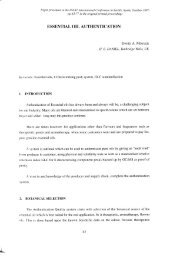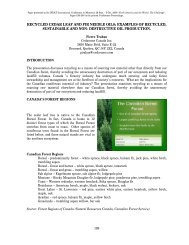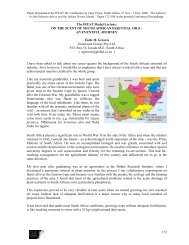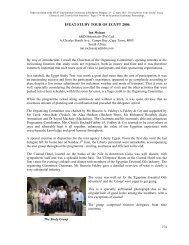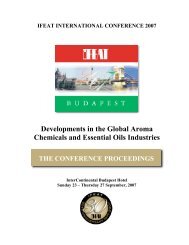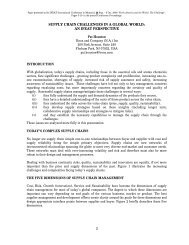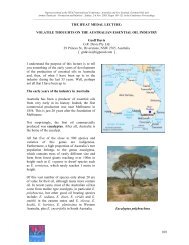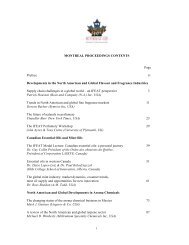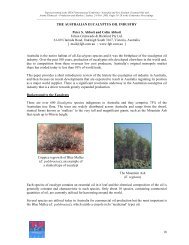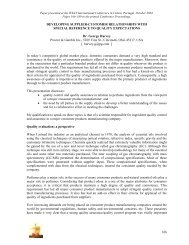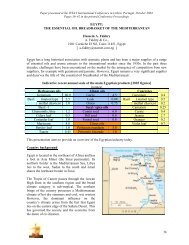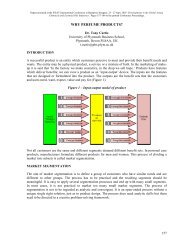HUNGARY'S ESSENTIAL OIL INDUSTRY Csaba Fodor ... - IFEAT
HUNGARY'S ESSENTIAL OIL INDUSTRY Csaba Fodor ... - IFEAT
HUNGARY'S ESSENTIAL OIL INDUSTRY Csaba Fodor ... - IFEAT
You also want an ePaper? Increase the reach of your titles
YUMPU automatically turns print PDFs into web optimized ePapers that Google loves.
Prior to 1990, Hungary was considered an agricultural economy and the main crops were wheat and<br />
corn. In the past decade, however, a large amount of foreign investment arrived in the country and<br />
changed the orientation to an industrial profile. Hungary succeeded in attracting the largest foreign<br />
investment per capita in the region up until 2001. This was due to the relatively cheap and skilled<br />
manpower resource, the advanced banking system, plus a stable economic and political environment.<br />
This inward investment trend stopped in 2002 as, probably due to the sharply increasing cost of skilled<br />
manpower, some large multinational companies moved their operations to cheaper developing<br />
countries, in several cases outside of the region.<br />
The Essential Oils Industry<br />
My discussion of the essential oil industry in Hungary examines the following time periods:<br />
• Before WW II.<br />
• The Communist era, 1945-90.<br />
• The transition period 1990-94.<br />
• The years of a market economy, 1994-2002<br />
• Future challenges<br />
Before WW II<br />
It is possible to trace the industry back to the 13 th century and the manufacture of the famous ‘Hungary<br />
(or Rosemary) Water’ but, instead, let us start with the birth of commercial essential oil production in<br />
the 1920s.<br />
The renowned Schimmel Co. of Miltitz in Germany established a subsidiary in Budapest in 1923. The<br />
company held a very strong position in supplying local users by offering a full range of aromatic<br />
products: liqueur and rum essences, essential oils, flower oils, perfume compounds and aroma<br />
chemicals.<br />
In the early 1920s, Dr. Jules Bittera introduced several new selected crops from abroad, including<br />
French lavender, English Mitcham peppermint and Dutch caraway. Next, he initiated a continuous<br />
crop selection programme to increase oil yields and qualities. As a result, the production levels grew<br />
year by year all products were exported and were praised as of very high quality (as recorded in Ernest<br />
Guenther’s The Essential Oils). Additionally, Dr. Bittera made products from wild grown plants.<br />
By 1941, production was as follows:<br />
From<br />
cultivation<br />
From wild<br />
plants<br />
Product Output (tonnes) Main producing areas<br />
Peppermint oil 8.5 Zalavár & Deáki<br />
Dillweed oil 3 Dömsöd & Deáki<br />
Lavender oil 0.6 Tihany<br />
Marjoram and caraway oils<br />
Kalocsa<br />
Juniper berry oil<br />
Oak moss extract.<br />
36



